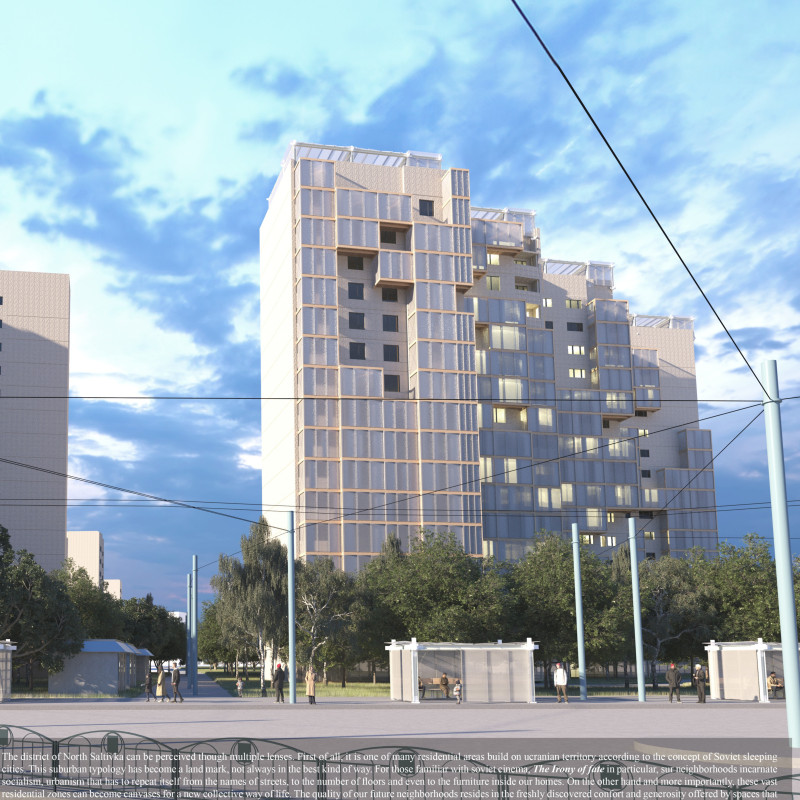5 key facts about this project
The architectural concept centers around a central idea of transparency and openness, which is articulated through extensive use of glass facades and open interior spaces. This openness not only allows for natural light to permeate the building, reducing the need for artificial lighting, but also creates a visual connection with the surrounding environment. The integrative approach to design reflects a commitment to creating spaces that are not only aesthetically pleasing but also functional and adaptable to the needs of their users.
In terms of materials, the project employs a careful selection that emphasizes sustainability and durability. The primary materials utilized include reinforced concrete for its structural elements, sustainably sourced timber for interior features, and high-performance glass that facilitates energy efficiency. The use of these materials demonstrates a conscious choice aimed at minimizing the building's carbon footprint while ensuring longevity and resilience.
Key components of the project include multi-functional spaces that can be adapted for various uses. This flexibility is enhanced by movable partitions that allow for the reconfiguration of interior layouts, catering to a range of activities from formal gatherings to informal community events. The design also integrates green spaces, such as roof gardens and landscaped courtyards, promoting biodiversity and enhancing the overall wellbeing of the inhabitants. These thoughtfully designed outdoor areas serve as extensions of the interior spaces, blurring the lines between indoor and outdoor living.
The unique design approach taken here emphasizes the importance of human scale and interaction. The building encourages social engagement through communal areas that are strategically placed to invite collaboration and interaction among users. This aspect is particularly relevant in an urban setting, where fostering a sense of community can significantly enhance the quality of life.
Attention to detail is apparent throughout the project, with careful consideration given to the integration of building systems. Advanced HVAC systems are discretely incorporated, ensuring comfort while promoting energy efficiency, and rainwater harvesting systems are planned for capturing and utilizing natural resources effectively. These elements collectively contribute to creating a sustainable architectural solution that aligns with contemporary standards.
The project not only fulfills its intended purpose but also serves as a model for future architectural endeavors striving for a harmonious balance between functionality, sustainability, and community engagement. As one examines the architectural plans, sections, and designs, it becomes evident that every decision made during the design process has been thoughtfully considered to enhance both the aesthetic and practical qualities of the space.
Readers interested in gaining a deeper understanding of this architectural project are encouraged to explore the various elements of its design presentation. Delving into the architectural plans, sections, and innovative ideas that underpin the project will provide a more comprehensive view of how contemporary architecture can effectively address both social and environmental challenges while creating spaces that resonate with the needs of their inhabitants.


 Leopold Victorin Bourgier
Leopold Victorin Bourgier 























